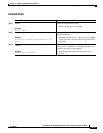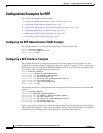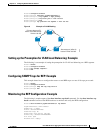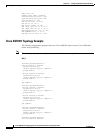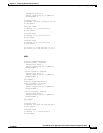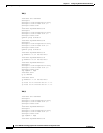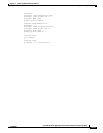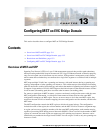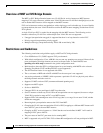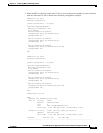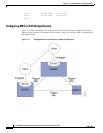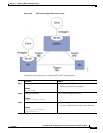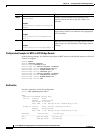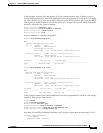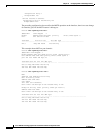
CHAPTER
13-1
Cisco ASR 901 Series Aggregation Services Router Software Configuration Guide
OL-23826-09
13
Configuring MST on EVC Bridge Domain
This section describes how to configure MST on EVC Bridge Domain.
Contents
• Overview of MST and STP, page 13-1
• Overview of MST on EVC Bridge Domain, page 13-2
• Restrictions and Guidelines, page 13-2
• Configuring MST on EVC Bridge Domain, page 13-4
Overview of MST and STP
Spanning Tree Protocol (STP) is a Layer 2 link-management protocol that provides path redundancy
while preventing undesirable loops in the network. For a Layer 2 Ethernet network to function properly,
only one active path can exist between any two stations. STP operation is transparent to end stations,
which cannot detect whether they are connected to a single LAN segment or a switched LAN of multiple
segments.
MST maps multiple VLANs into a spanning tree instance, with each instance having a spanning tree
topology independent of other spanning tree instances. This architecture provides multiple forwarding
paths for data traffic, enables load balancing, and reduces the number of spanning tree instances required
to support a large number of VLANs. MST improves the fault tolerance of the network because a failure
in one instance (forwarding path) does not affect other instances (forwarding paths).
For routers to participate in MST instances, you must consistently configure the routers with the same
MST configuration information. A collection of interconnected routers that have the same MST
configuration comprises an MST region. For two or more routers to be in the same MST region, they
must have the same VLAN-to-instance mapping, the same configuration revision number, and the same
MST name.
The MST configuration controls the MST region to which each router belongs. The configuration
includes the name of the region, the revision number, and the MST VLAN-to-instance assignment map.
A region can have one or multiple members with the same MST configuration; each member must be
capable of processing RSTP bridge protocol data units (BPDUs). There is no limit to the number of MST
regions in a network, but each region can support up to 65 spanning tree instances. Instances can be
identified by any number in the range from 0 to 4094. You can assign a VLAN to only one spanning tree
instance at a time.



